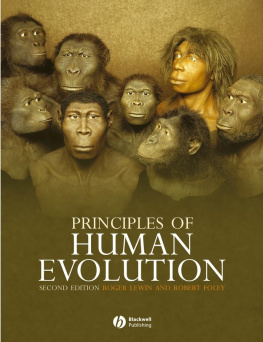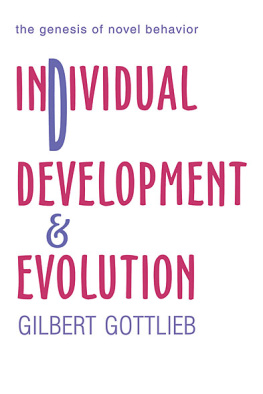Evolution in Four Dimensions
Life and Mind: Philosophical Issues in Biology and Psychology
Kim Sterelny and Robert A. Wilson, Series Editors
Evolution in Four Dimensions: Genetic, Epigenetic, Behavioral, and Symbolic Variation in the History of Life, revised edition, Eva Jablonka and Marion J. Lamb, 2014
Cooperation and Its Evolution, Volume 1: Agents and Environments, Kim Sterelny, Richard Joyce, Brett Calcott, and Ben Fraser, editors, 2012
Cooperation and Its Evolution, Volume 2: Agents and Mechanisms, Kim Sterelny, Richard Joyce, Brett Calcott, and Ben Fraser, editors, 2012
Ingenious Genes: How Gene Regulation Networks Evolve to Control Development, Roger Sansom, 2011
Yuck! The Nature and Moral Significance of Disgust, Daniel Kelly, 2011
Laws, Mind, and Free Will, Steven Horst, 2011
Perplexities of Consciousness, Eric Switzgebel, 2011
Humanitys End: Why We Should Reject Radical Enhancement, Nicholas Agar, 2010
Color Ontology and Color Science, Jonathan Cohen and Mohan Matthen, editors, 2010
The Extended Mind, Richard Menary, editor, 2010
Evolution in Four Dimensions
Genetic, Epigenetic, Behavioral, and Symbolic Variation in the History of Life
Revised Edition
Eva Jablonka and Marion J. Lamb
with illustrations by Anna Zeligowski
A Bradford Book
The MIT Press
Cambridge, Massachusetts
London, England
2014 Massachusetts Institute of Technology
All rights reserved. No part of this book may be reproduced in any form by any electronic or mechanical means (including photocopying, recording, or information storage and retrieval) without permission in writing from the publisher.
Library of Congress Cataloging-in-Publication Data
Jablonka, Eva.
Evolution in four dimensions : genetic, epigenetic, behavioral, and symbolic variation in the history of life / Eva Jablonka and Marion J. Lamb ; illustrated by Anna Zeligowski. Revised edition.
p. cm. (Life and mind: philosophical issues in biology and psychology)
A Bradford book.
First edition published: Cambridge, Massachusetts : MIT Press, 2005.
Includes bibliographical references and index.
ISBN 978-0-262-52584-8 (pbk. : alk. paper)
ISBN 978-0-262-32269-0 (retail e-book)
1. Evolution (Biology) 2. BiologyPhilosophy. I. Lamb, Marion J. II. Zeligowski, Anna, illustrator. III. Title.
QH366.2.J322 2014
576.82dc23
2013029577
To our genetic, epigenetic, and cultural parents and offspring
Preface to the Revised Edition
Since Evolution in Four Dimensions was first published, there has been a spate of new and exciting discoveries in biology. Many of the new findings are directly relevant to the topics we discussed in 2005, by and large supporting and often strengthening the arguments we put forward then. In addition to new facts, new ideas about evolution have also emerged; biologists have been questioning the assumptions on which twentieth-century evolutionary theory was based, and have proposed alternative ways of approaching evolutionary problems. In this edition of E4D, we introduce some of the new knowledge and fresh ideas, in the firm belief that they add weight to our view that the old, gene-based, Modern Synthesis version of evolutionary theory is inadequate for the twenty-first century.
We have left parts I to III of the book almost unchanged from the original edition, making only a few minor corrections, mainly typographical. For the benefit of ebook readers, we have also numbered all the endnotes chapter by chapter, and included markers for them in the text. Most of the new material is to be found in part IV, which is a single, long, additional chapter. To carry the reader through this we have made use of the dialogue form employed elsewhere in the book, with our interrogator (IM) asking us (ME) questions and questioning the answers we give. The chapter has five sections; in the first four, we go through each of our dimensionsthe genetic, the epigenetic, the behavioral, and the symbolicreviewing and updating the ideas and facts presented earlier. We devote quite a lot of space to the involvement of epigenetics in the other dimensions of heredity, because there has been an explosion of information in this area, which is both empirically and conceptually groundbreaking for evolutionary theory. In the fifth section of the chapter, we look at the general implications of the work we have been describing for ideas about evolution.
At the beginning of the endnotes for each chapter, we have added a short nine years later paragraph, in which we signpost where in the literature recent information is to be found. Many references have been added to the reference list, and there are additional entries in the index. With the help of Anna Zeligowskis drawings, we have tried to present the new material in a way that retains the spirit of the original edition of E4D and enhances its usefulness.
Acknowledgments
This book would not have been written without the encouragement and help of our friends, families, students and colleagues. We are grateful to all of them.
Part of the book was written while E. J. was a visitor at the Museum of Vertebrate Zoology, Berkeley, University of California, and we would like to thank David and Marvalee Wake and their colleagues for the good working environment they provided, and Martha Breed and the WW group for their company and the wonderful nature trips. We also want to thank everyone working at the Cohn Institute for the History and Philosophy of Science and Ideas at Tel Aviv University for their help and support. Our debt to the students in the Cohn Institute and the participants in the Networks in Evolution seminar at the European Forum Alpbach 2002 is a big one. Their comments and criticisms made us clarify many of our ideas and arguments, abandon some of them, and think deeply about how we should present the material in this book. We hope that they will enjoy the final product.
We have benefited from information and advice from many people, but our special thanks must go to those who have read and commented on various drafts of the book. Eytan Avital, Daniel Dor, Fanny Doljanski, Yehuda Elkana, Yehudit Elkana, Evelyn Fox Keller, James Griesemer, Revital Katznelson, Jawed Iqbal, Lia Nirgad, Christine Queitsch, Richard Strohman, Iddo Tavory, and Alan Templeton each read sections or chapters, and pointed out some of the errors and ambiguities in what we had written. Our long-suffering friends Lia Ettinger, Simona Ginsburg, and Joy Hoffman read drafts of the whole book, and their comments, criticism, and many valuable suggestions have made it a far better book than it would otherwise have been. Tom Stone, Philip Laughlin and their colleagues at the MIT Press were helpful and encouraging throughout, and we thank them for their guidance and excellent editorial work.
We also want to thank Rami of the HaShloshah restaurant in Jerusalem. His hamousta soup sustained us through many long days, and many problems were resolved at his tables.
Finally we need to acknowledge the contribution of Beauty-the-cat, who sat on every page of the manuscript, thereby delaying its completion by several weeks. As an ex-feral cat, she was a constant reminder of the power of learning, active niche construction, and the coevolution of humans and cats.
Prologue
The content and format of this book are a little unusual, so we want to begin by explaining what it is about and how it is organized. Our basic claim is that biological thinking about heredity and evolution is undergoing a revolutionary change. What is emerging is a new synthesis, which challenges the gene-centered version of neo-Darwinism that has dominated biological thought for the last fifty years.
Next page










